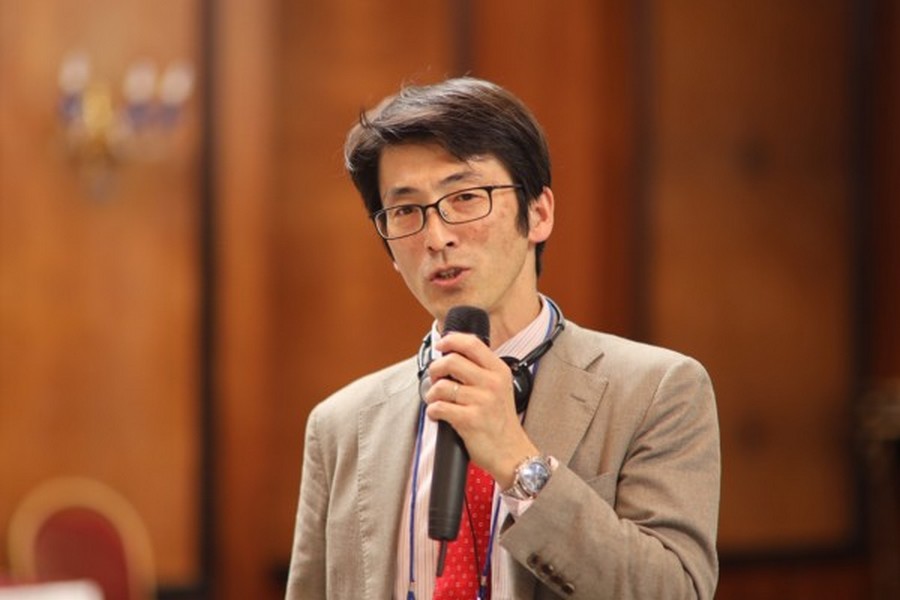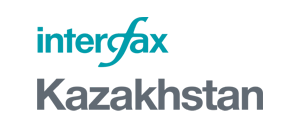Kazuhiro YOSHIDA, the World Bank's Senior Irrigation and Drainage Specialist:
THE IRRIGATION NETWORK UPGRADE IN THE CENTRAL ASIAN COUNTRIES WILL INDUCE 50% YIELD GROWTH BY 2050

The World Bank is planning to launch a water resources accounting project in Kazakhstan and the Central Asian countries, within the framework of which it intends to devise a model for assessing available water resources in the region. Senior Irrigation and Drainage Specialist Kazuhiro YOSHIDA at the World Bank talked to Interfax-Kazakhstan why Kazakhstan needs a plan for the rational use of water from sources and what effect should be expected from the irrigation networks upgrade in agriculture.
- How developed, in your opinion, are irrigation systems in Kazakhstan's agriculture?
- Currently water supply and irrigation systems in Kazakhstan are predominantly ineffective. It is possible to say that they have begun to decay since the beginning in the 1990s.
Aging irrigation and water supply infrastructure result in high water losses. As a result, some territories that were previously suitable for agriculture are experiencing desertification. According to forecasts, climate change, in particular, changes in precipitation and a decrease in available water resources in many parts of Kazakhstan, especially in the southern regions, will further aggravate this situation. In addition, Kazakhstan is landlocked and largely dependent on the drains of the countries located in the upper reaches of the rivers.
- According to the Ministry of Agriculture, Kazakhstan has 1.4 million hectares of irrigated land, which account for up to 42% of the total gross crop production. It plans to increase these figures by another 600,000 hectares by 2021, that is, to bring up to 2 million hectares. What do you think, is it possible to achieve such indicators in such a short time?
- It is necessary to distinguish areas equipped for irrigation and actually irrigated land. According to the FAO AQUASTAT database, the total area equipped for irrigation in Kazakhstan was 2 million hectares in 2010, while the actual irrigated area is 1.1 million hectares – this is 57% of the total area equipped for irrigation. Unused areas are idle, mainly due to lack of maintenance and major repairs. The task set may be uneasy, but, as already noted, 600,000 hectares are equipped with irrigation infrastructure.
- Worldwide private investment is attracted through PPP schemes to develop irrigation infrastructure. How developed are these mechanisms in Kazakhstan?
- Yes, you are right, PPP is used to develop irrigation infrastructure around the world. International Finance Corporation (IFC), an organization of the World Bank Group that works with the private sector, deals with these issues. IFC has conducted the world's first-ever PPP deal in irrigation. It was in Morocco. Given the growing demand for private investment that will satisfy the need for agriculture to restore and modernize irrigation systems, the PPP model could play an important role. First successes of international and domestic companies will allow attracting further investments. Support from development institutions could facilitate this process as a lot of will be required to prepare projects for investing and setting up innovative mechanisms to attract private investment, including in Kazakhstan.
- Reconstruction of drainage and irrigation systems using private investment will entail an increase in tariffs. Do you think whether irrigation water will be available to farmers after the cost payment increase?
- Firstly, upgraded irrigation and drainage systems are more efficient in terms of energy consumption and water supply to and from fields than irrigation facilities from the past. In addition, upgraded systems allow resetting an irrigation schedule, as well as assessing and controlling water supply volumes more accurately. This provides for reliable irrigation water supply, taking into consideration specific needs for a particular crop and territory. Drainage works efficiently thereby reducing water logging and flood events.
It is expected that improved systems will help significantly increase farm productivity and income, and farmers will be able to afford higher tariffs and also improve their net income.
Secondly, the water tariffs rise, on the one hand, will provide for fund raising for timely maintenance of irrigation infrastructure and enhancing the quality of water supply services by and large, and on the other, it will motivate farmers to use water more efficiently and more economically.
Thirdly, in addition to improvements in existing irrigation infrastructure, we are also talking about new irrigation infrastructure on land that has not previously been irrigated. This will create opportunities for growing new types of crops, something was previously impossible.
The reduction of available water resources due to climate change and the growing demand for water in agriculture points out an obvious need for introducing changes in irrigation and drainage infrastructure. As the first step, the World Bank Group is launching a project for water resource accounting, within the framework of which a model will be devised for assessing available water resources in the Central Asia region. In addition, the World Bank team backs the assessment of readiness of farms for the water tariff rise and, if necessary, will recommend the use of subsidies to provide the poorest people for access to water.
- Are such PPP projects being implemented in Kazakhstan?
- PPP is not yet very developed in Kazakhstan. However, this is a priority area for Kazakhstan, since the PPP model is an effective way to develop infrastructure. The implementation of the innovative PPP model in the irrigation system can help mobilize social capital, relieve local budgets, increase sustainability process, increase profitability and reduce risks through effective project management.
- One of the ambitious goals of the Ministry of Agriculture is to increase the number of reservoirs that could accumulate water during floods. Do you think there is a need to increase the number of reservoirs in order to use irrigation in certain areas, and will this mechanism be effective?
- The total capacity should be determined based on the demand and the current volume of water resources. It is necessary to develop a plan for the water resources development from surface sources.
- What effect can be achieved by developing irrigation infrastructure in Kazakhstan's agriculture?
- Irrigation is of great importance for agricultural productivity in Central Asia. It is estimated that the modernization of infrastructure and irrigation methods in all the Central Asian countries can increase productivity by 20% by 2030 or by 50% by 2050. At the same time, without modernization, the decrease in yield may amount to 10%. One can also say the same re Kazakhstan.
- What should Kazakhstan focus on in the development of irrigation systems and why?
- It is necessary to introduce an effective management culture and operational management into Kazakhstan's irrigation system. Monitoring and control systems for canal utilization based on information technologies should be introduced in order to enhance the quality of water resources management, not only at the operational level, but also at the on-farm level. Since the farmers are end users, when introducing new technologies it is necessary to inform farmers about planned improvements and benefits they can receive due to this.
In parallel with this, the existing principles for the canal system utilization should be upgraded gradually as a rehabilitation program. New methods are needed such as the development of on-farm irrigation schedules in order to achieve a maximum irrigation efficiency, which will allow forecasting irrigation deadlines and volumes.
- Thank you for the interview!
December, 2019
© 2025 Interfax-Kazakhstan news agency
Copying and use of these materials without reference to the source is prohibited
Archive





